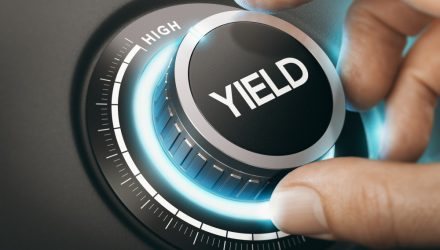With global rates at historical lows, the appetite for yield is making fixed income investors rethink junk bonds and not only that—they’re taking action with inflows into high yield bond funds and they can’t get enough.
“While bond funds are nothing new, junk bond exchange-traded funds, which aim to mirror the makeup and performance of a particular index, are having a moment,” a Money article said. “Low interest rates driven by Federal Reserve policy has encouraged companies to borrow — leading to a record $51.5 billion of junk bonds issued in June.”
“Investors, hungry for decent yields, seem unable to get enough,” the article added. “On average, junk bonds yield 4.77%, compared to less than 1.1% for bonds overall. The four largest high-yield ETFs, which collectively total $51.6 billion, saw net inflows of a combined $13.9 billion year to date through July 21.”
^MSACWIHDY data by YCharts
ETF Options in High Yield
Here are a fews funds to consider for junk bond exposure:
- iShares iBoxx $ High Yield Corp Bond ETF (NYSEArca: HYG): HYG tracks the investment results of the Markit iBoxx® USD Liquid High Yield Index, which is comprised of high yield U.S. corporate bonds that have less than investment-grade quality.
- SPDR Bloomberg Barclays Short-Term High Yield Bond ETF (NYSEArca: SJNK): SJNK seeks to provide investment results that correspond generally to the price and yield performance of the Bloomberg Barclays US High Yield 350mn Cash Pay 0-5 Yr 2% Capped Index. SJNK invests its total assets in the securities comprising the index, which is designed to measure the performance of short-term publicly issued U.S. dollar-denominated high yield corporate bonds.
- iShares 0-5 Year High Yield Corp Bond ETF (NYSEArca: SHYG): SHYG seeks to track the investment results of the Markit iBoxx® USD Liquid High Yield 0-5 Index, which is primarily composed of U.S. dollar-denominated, high yield corporate bonds with remaining maturities of less than five years. Like SJNK, debt maturities are shorter, thereby helping to hedge some credit risk, but issues are still less than investment-grade.
For a high yield option to squeeze out that extra yield albeit more risk, take a look at the Goldman Sachs Access High Yield Corporate Bond ETF (GHYB). GHYB seeks to provide investment results that closely correspond, before fees and expenses, to the performance of the FTSE Goldman Sachs High Yield Corporate Bond Index.
The fund seeks to achieve its investment objective by investing at least 80% of its assets (exclusive of collateral held from securities lending) in securities included in its underlying index. The index is a rules-based index that is designed to measure the performance of high yield corporate bonds denominated in U.S. dollars that meet certain liquidity and fundamental screening criteria.
For more market trends, visit ETF Trends.









